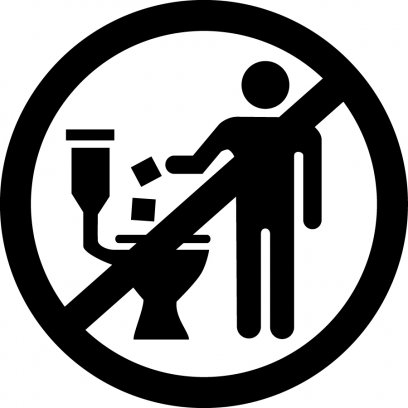
EU nations adopt industry guidelines on flushability
With 229 individual packages checked across 11 countries, more than 90% of the wipes are compliant with the Code.

22nd June 2016
Innovation in Textiles
|
Brussels
EDANA, the Brussels-based association serving the nonwovens and related industries, has released the results of a review of wipes packaging in Europe, showing adoption of the industry’s own voluntary Flushability Guidelines for testing, and its labelling Code of Practice for wipes packaging.
Of the 73 products where a pack of wipes required the symbol (including baby wipes, toilet cleaning wipes, and intimate feminine wipes etc), 66 showed a visual symbol on how to dispose, while four items had neither a symbol nor words to help the consumer.
In each case where information on the pack is different to the Code’s recommendation, EDANA is contacting the producer to help them understand the importance of showing the symbol.
“EDANA and its member companies, which includes wet wipes manufactures, have been dedicated to testing their materials, changing them where necessary or desired, and updating artwork on their packages to help the consumer better understand how to properly dispose of their wipe,” said Abby Bailey, Director of Marketing and Communications.
“EDANA continues to reach out to manufacturers to share the guidelines with them, and answer any questions about how they can better help the public treat our water and sewer networks with respect”.
“One of the surprising outcomes of the study for EDANA was that there was high number of symbols on these packs where a label was discretionary (62%) or not required (53%). We know that wipes aren’t always used for their intended purpose, and we are proud that so many companies have gone beyond the requirement of the Code, in order to aid consumers, and protect our sewer networks,” said Abby.
“However, we recognise that as an industry, we need to be constantly vigilant, not only to ensure that those products already on shelves are correctly labelled with the one recommended symbol, but that any new manufacturer or product aligns with the industry code too. We continue to work closely with the European water industry, and companies along the supply chain, to find ways to help members of the public better protect their sewer networks, and dispose of their wipes responsibly.”
The labelling Code of Practice gives a clear decision path for manufacturers to follow and properly mark their products, and advises whether a package must have a symbol, or whether the symbol is discretionary, or not required, the association reports.
The Guidelines and Code of Practice are available free of charge on the EDANA website, and to help manufacturers, retailers, and members of the public understand that wipes made for different purposes are made of different materials, and that the way to dispose of them needs to be different too.

Business intelligence for the fibre, textiles and apparel industries: technologies, innovations, markets, investments, trade policy, sourcing, strategy...
Find out more